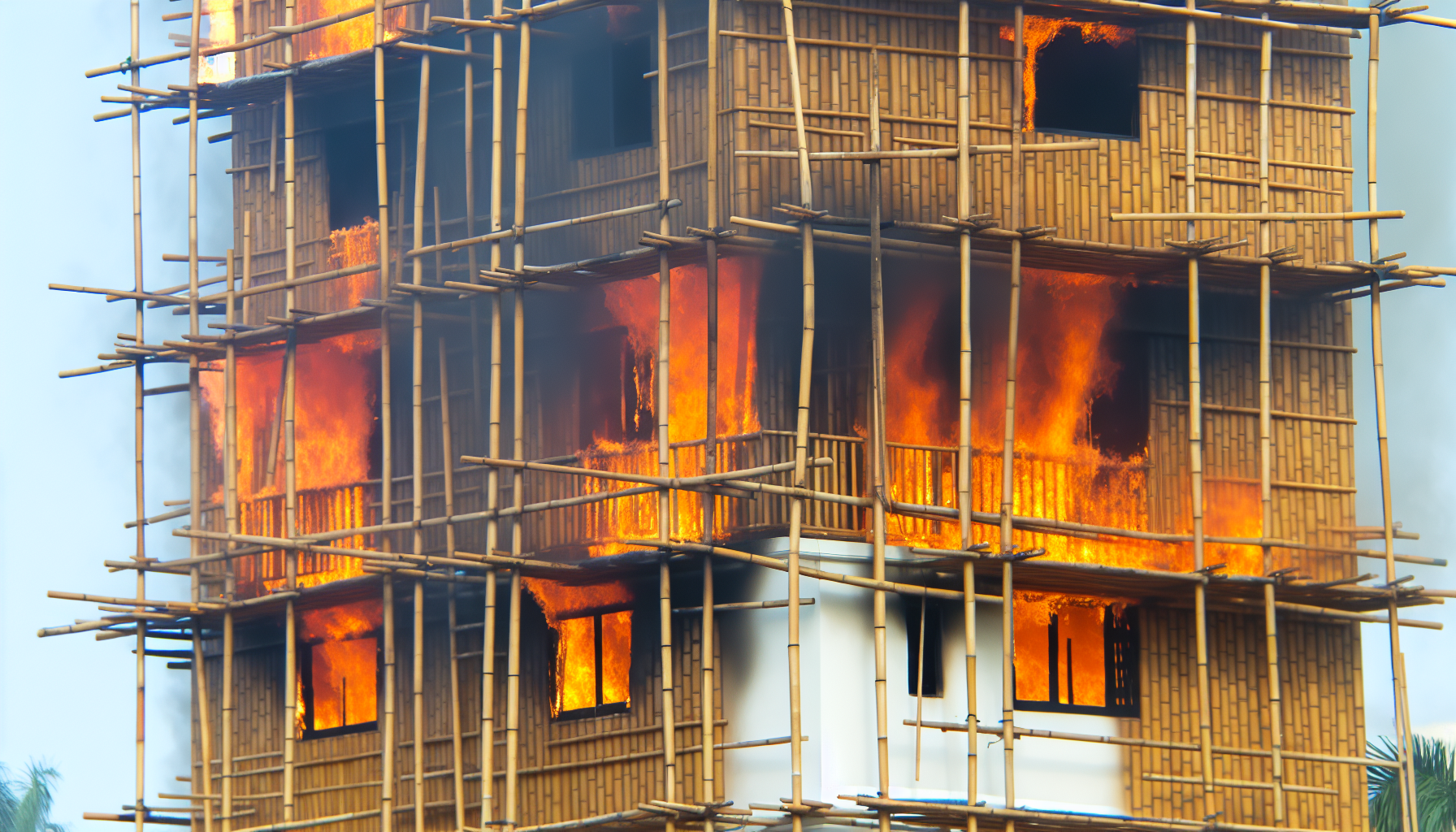
AI-generated image
A deadly fire that ravaged a Hong Kong housing complex has raised fresh concerns about the risks associated with the use of bamboo scaffolding, a practice that dates back centuries but has increasingly drawn scrutiny over its fire hazards.
The blaze, which resulted in at least 44 fatalities and left dozens missing, is the deadliest fire to hit Hong Kong in three decades. It quickly spread across bamboo scaffolding and construction mesh, causing flames to tear through the structure with alarming speed.
While the exact cause of the fire remains unclear, the rapid ignition of the scaffolding—made from bamboo and covered in green mesh—has brought attention to its dangerous flammability.
Bamboo scaffolding, a common sight in Hong Kong's dense urban landscape, has long been a material of choice for construction. It is cheap, abundant, and flexible, and has been traditionally tied together with nylon cords.
Despite its widespread use, experts have long warned of the fire risks posed by this construction method, which has been largely phased out in other parts of China in favor of sturdier metal scaffolding.
In Hong Kong, however, bamboo scaffolding remains a significant part of the construction landscape. Official figures show that there are around 2,500 registered bamboo scaffolding masters in the city, compared to about 7,500 metal scaffolders.
The sight of small teams of scaffolders scaling tall buildings and covering them in bamboo lattices and green mesh has become an iconic part of the city's skyline. The bamboo scaffolds are often used alongside construction netting to protect pedestrians from falling debris, but the tragic blaze at Wang Fuk Court, a residential complex in the Tai Po district, has underscored the inherent fire hazards of this construction method.
In the wake of the tragedy, Hong Kong's Chief Executive, John Lee, announced that a task force had been set up to investigate the fire's cause. Lee said that the Buildings Department's independent review unit would assess whether the building's exterior met fire retardant standards. "If there is any wrongdoing, we will pursue accountability in accordance with the law," he said in a press conference.
The Hong Kong government also promised increased checks on ongoing construction projects, with a focus on ensuring that scaffolding mesh materials meet fire retardant standards. In March, the government had already introduced a policy requiring 50% of new public works contracts to use metal scaffolding, but the focus had primarily been on worker safety rather than addressing the fire risk posed by bamboo scaffolding. Between 2019 and 2024, 22 workers died in scaffolding-related accidents, according to official figures.
Despite these concerns, Hong Kong's Secretary for Labour, Chris Sun, stated earlier this year that the government had no plans to ban bamboo scaffolding, noting that it remains an integral part of the city's construction practices. The issue of fire safety, however, has become harder to ignore, especially following several high-profile incidents.
In October, a large bamboo scaffolding at Chinachem Tower in Hong Kong's Central business district caught fire, once again sending flames through construction netting and bamboo poles. There have been at least two other incidents involving bamboo scaffolding fires this year, according to the Association for the Rights of Industrial Accident Victims in Hong Kong.
Industry experts argue that protective netting and screens used on scaffolding must comply with recognized fire retardant standards. According to the Hong Kong Labour Department's Code of Practice for Bamboo Scaffolding Safety, these materials should have appropriate fire-resistant properties.
However, whistleblower Jason Poon, who has previously exposed shoddy construction practices in the city, claimed that fire hazards remain prevalent in scaffolding used at many residential complexes. Poon said he had raised concerns with government departments about the lack of fire retardant materials in scaffolding nets at a different housing complex last year, but his warnings went unheeded.
The recent blaze has sparked calls for a reevaluation of the safety standards governing bamboo scaffolding in Hong Kong. While the material's cultural and historical significance in Chinese architecture remains undeniable, the fire risks it presents—particularly in a densely populated city like Hong Kong—are becoming increasingly difficult to overlook.
As the city continues to grapple with the fallout from this tragedy, many are questioning whether it is time to prioritize fire safety over tradition in the construction industry.







